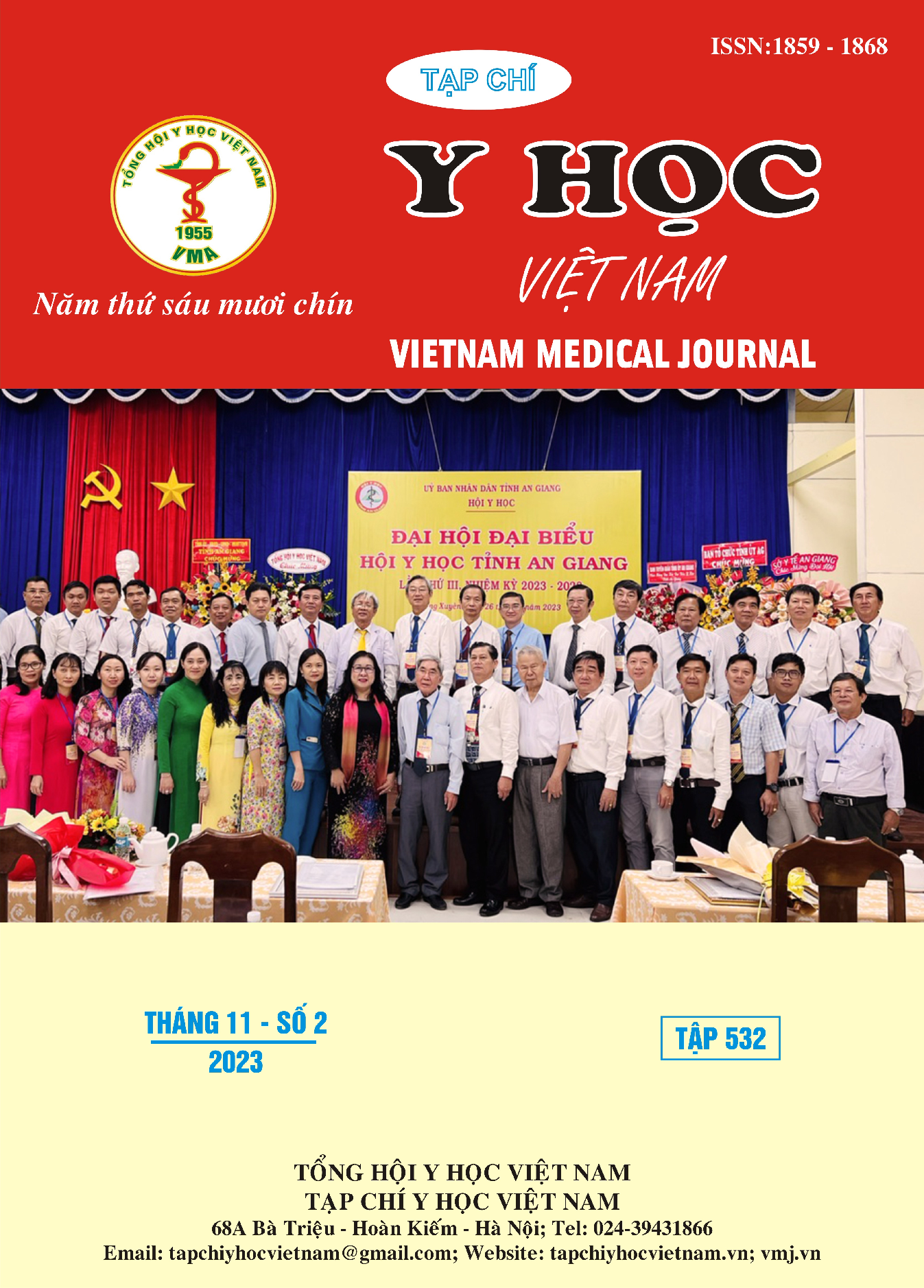CLINICAL FEATURES, LABORATORY FINDINGS, GENE MUTATION PANEL AND INITIAL RESPONSE TO TREATMENT IN CHILDREN WITH PRIMARY GLOMERULAR DISEASE RELATED TO GENE MUTATION IN CHILDREN HOSPITAL 1
Main Article Content
Abstract
Introduction: Children with primary glomerular diseases usually present with diverse clinical manifestations, the two most common are nephrotic syndrome (NS) and persistent proteinuria. More than 50 genes are determined to be related to steroid-resistant (SR) NS and persistent proteinuria suspected to gene mutation. In Vietnam there are several studies about specific genes, not gene mutation panel in children with NS and persistent proteinuria suspected to gene mutation. Method: We conducted a retrospective observational study of 42 children with NS and persistent proteinuria suspected to gene mutation in Children Hospital 1 from January 2018 to April 2021. Cases of NS and persistent proteinuria suspected to gene mutation include NS (1) appearing during the first year of life, (2) with family history of kidney disease and (3) consanguinity, (4) with syndromic features or extrarenal anomalies, (5) initial SRNS; and persistent proteinuria with (1) focal segmental glomerular sclerosis (FSGS) in kidney biopsy or (2) family history of kidney disease. Genetic testing is performed by Gene Solutions Company at Ho Chi Minh city via gene panel including 37 genes, and pathogenicity of variants determined based on criteria proposed by the American College of Medical Genetics and Genomics (ACMG). Results: 42 children were performed genetic testing, 1 with congenital NS (2,4%), 3 with infantile NS (7,1%), 31 with initial SRNS (73,8%) and 7 with persistent proteinuria (16,7%). 21 have gene mutations, 7 of them have a pathogenic/likely pathogenic variant. These variants are determined in 1 child with congenital NS (ARHGDIA), 5 children with SRNS (including NPHS2 (1), COL4A5 (2), CUBN (1), COL4A3 (1)) and 1 child with persistent proteinuria (COL4A5). There are 6 boys and 1 girl. 100% of cases have microscopic hematuria, no case has extrarenal anomaly, 2 children have family history of kidney diseases (one in SRNS group and one in persistent proteinuria group). The child with congenital NS was not performed renal biopsy, and the majority of histological finding in 5 remaining cases is FSGS (4/6). The child with congenital NS was just only received symptomatic treatment and died after that because of severe sepsis. In 5 cases with SRNS related to gene mutation, 2 cases with NPHS2 and CUBN mutations did not respond to not only steroid but also CNI ± ACE inhibitors/ARB therapy, 3 cases with mutations of genes related to collagen formation did not respond to steroid therapy and reached partial remission with CNI ± ACE inhibitors/ARB therapy. The child with persistent proteinuria related to gene mutation is being treated with ACE inhibitors/ARB but not long anough to determine whether he responds to therapy or not. Conclusions: The most common gene mutation in children with monogenic glomerular disease is COL4A5, the majority of histological finding is FSGS. Treatment with immunosuppressive agents should be considered cautiously for monogenic glomerular disease because of poor response.
Article Details
Keywords
Nephrotic syndrome, persistent proteinuria, genetic testing.
References
2. Gee H. Y., Saisawat P., Ashraf S., et al. (2013), "ARHGDIA mutations cause nephrotic syndrome via defective RHO GTPase signaling", J Clin Invest, 123 (8), pp. 3243-53.
3. Lu L., Yap Y. C., Nguyen D. Q., et al. (2022), "Multicenter study on the genetics of glomerular diseases among southeast and south Asians: Deciphering Diversities - Renal Asian Genetics Network (DRAGoN)", Clin Genet, 101 (5-6), pp. 541-551.
4. Nagano C., Yamamura T., Horinouchi T., et al. (2020), "Comprehensive genetic diagnosis of Japanese patients with severe proteinuria", Sci Rep, 10 (1), pp. 270.
5. Nozu K., Nakanishi K., Abe Y., et al. (2019), "A review of clinical characteristics and genetic backgrounds in Alport syndrome", Clin Exp Nephrol, 23 (2), pp. 158-168.
6. Sadowski C. E., Lovric S., Ashraf S., et al. (2014), "A single-gene cause in 29.5% of cases of steroid-resistant nephrotic syndrome", J Am Soc Nephrol, 26 (6), pp. 1279-89.
7. Trautmann A., Vivarelli M., Samuel S., et al. (2020), "IPNA clinical practice recommendations for the diagnosis and management of children with steroid-resistant nephrotic syndrome", Pediatric Nephrology, 35 (8), pp. 1529-1561.
8. Wang F., Zhang Y., Mao J., et al. (2017), "Spectrum of mutations in Chinese children with steroid-resistant nephrotic syndrome", Pediatric Nephrology, 32 (7), pp. 1181-1192.


